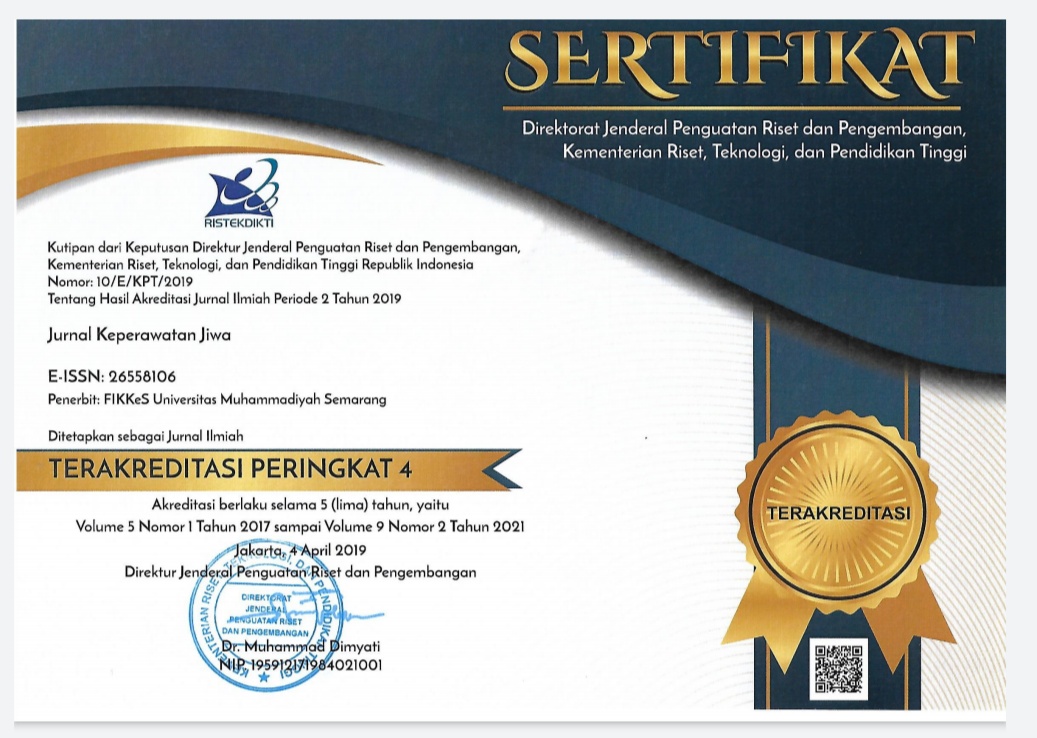Faktor Resiko yang Mempengaruhi Kejadian Stunting pada Anak Pra-Sekolah di Negara-Negara Berkembang
(1) Fakultas Ilmu Kesehatan, Universitas ‘Aisyiyah Yogyakarta
(2) Fakultas Ilmu Kesehatan, Universitas ‘Aisyiyah Yogyakarta
(3) Fakultas Ilmu Kesehatan, Universitas ‘Aisyiyah Yogyakarta
(*) Corresponding Author
Abstract
Stunting mempengaruhi sepertiga anak di negara berkembang. Studi melaporkan bahwa faktor resiko stunting seperti sosial ekonomi, karakteristik ibu, karakteristik anak dan lingkungan terlibat dalam pertumbuhan dan perkembangan anak. Tujuan Literature Review untuk meninjau secara sistematis faktor resiko yang mempengaruhi kejadian stunting pada anak-anak pra-sekolah di negara-negara berkembang. Penelitian dilakukan dengan mencari artikel dari 3 database elektronik, yaitu PubMed, ProQuest, dan Science Direct, dari 2014 hingga 2020. Artikel teridentifikasi 503 artikel setelah dilakukan studi appraisal menggunakan program Critical Appraisal Skills Program (CASP), dan metode sintesis menggunakan modifikasi PEOS didapatkan 8 artikel untuk direview akhir. Data ditinjau menggunakan pedoman PRISMA-P. Delapan studi ditinjau dari 503 studi yang diekstraksi. Artikel melaporkan bahwa faktor sosial ekonomi, karakteristik ibu, karakteristik anak dan lingkungan menjadi faktor resiko kejadian stunting. Faktor resiko kejadian stunting dipengaruhi, antara lain semakin buruk sosial ekonomi keluarga dan lingkungan maka kejadian stunting semakin meningkat dan semakin baik karakteristik ibu dan anak maka kejadian stunting semakin sedikit.
Kata kunci: faktor resiko, prasekolah, stunting
RISK FACTORS THAT INFLUENCE STUNTING EVENTS IN PRE-SCHOOL CHILDREN IN DEVELOPING COUNTRIES
ABSTRACT
Stunting affects one third of children in developing countries. Studies report that stunting risk factors such as socioeconomic, maternal characteristics, child characteristics and the environment are involved in the growth and development of children. This study aims to systematically review risk factors that influence the incidence of stunting in pre-school children in developing countries. The research are conducted by searching for articles from 3 electronic databases, namely PubMed, ProQuest, and Science Direct, from 2014 to 2018. Articles were identified 503 articles after an appraisal study using the Critical Appraisal Skills Program (CASP) program, and the synthesis method used modification PEOS obtained 8 articles for final review. Data were reviewed using PRISMA-P guidelines. Eight studies were reviewed from the 503 extracted studies. The article reports that socioeconomic factors, maternal characteristics, child characteristics and the environment are risk factors for stunting. Risk factors for stunting events are affected, among others, the worse the socioeconomic family and the environment, the incidence of stunting is increasing and the better the characteristics of mother and child, the fewer stunting events.
Keywords: preschoolers, risk factors, stunting
Keywords
Full Text:
PDFReferences
Ansuya, null, Baby S. Nayak, B. Unnikrishnan, Anice George, Shashidhara Y. N, Suneel C. Mundkur, and others, ‘Risk Factors for Malnutrition among Preschool Children in Rural Karnataka: A Case-Control Study’, BMC Public Health, 18 (2018), 283
Danaei, Goodarz, Kathryn G. Andrews, Christopher R. Sudfeld, Günther Fink, Dana Charles McCoy, Evan Peet, and others, ‘Risk Factors for Childhood Stunting in 137 Developing Countries: A Comparative Risk Assessment Analysis at Global, Regional, and Country Levels’, PLoS Medicine, 13 (2016), e1002164
Degarege, Dawit, Abraham Degarege, and Abebe Animut, ‘Undernutrition and Associated Risk Factors among School Age Children in Addis Ababa, Ethiopia’, BMC Public Health, 15 (2015), 375
Duc, Nguyen Huu Chau, ‘Developmental Risk Factors in Vietnamese Preschool-Age Children: Cross-Sectional Survey’, Pediatrics International: Official Journal of the Japan Pediatric Society, 58 (2016), 14–21
Emamian, Mohammad Hassan, Mansooreh Fateh, Neman Gorgani, and Akbar Fotouhi, ‘Mother’s Education Is the Most Important Factor in Socio-Economic Inequality of Child Stunting in Iran’, Public Health Nutrition, 17 (2014), 2010–15
Galgamuwa, Lahiru Sandaruwan, Devika Iddawela, Samath D. Dharmaratne, and G. L. S. Galgamuwa, ‘Nutritional Status and Correlated Socio-Economic Factors among Preschool and School Children in Plantation Communities, Sri Lanka’, BMC Public Health, 17 (2017), 377
Lestari, S., & Livana, P. H. (2019). Kemampuan Orangtua dalam Melakukan Stimulasi Perkembangan Psikososial Anak Usia Prasekolah. Jurnal Ilmu Keperawatan Jiwa, 2(3), 123-129. http://dx.doi.org/10.32584/jikj.v2i3.438
Peters, M. D. J., Godfrey, C. M., Khalil, H., McInerney, P., Parker, D., & Soares, C. B. (2015). Guidance for conducting systematic scoping reviews. International Journal of Evidence-Based Healthcare, 13(3), 141–146. https://doi.org/10.1097/XEB.000000000 0000050
Raj, Anita, Lotus P. McDougal, and Jay G. Silverman, ‘Gendered Effects of Siblings on Child Malnutrition in South Asia: Cross-Sectional Analysis of Demographic and Health Surveys from Bangladesh, India, and Nepal’, Maternal and Child Health Journal, 19 (2015), 217–26
Rosita, Devi. 2015. Faktor-Faktor yang Mempengaruhi Stunting pada Balita Usia 12-59 Bulan di Kecamatan Godong Kabupaten Grobogan. Perpustakaan UNS : digilib UNS Diakses 22 Desember 2018
Svefors, Pernilla, Anisur Rahman, Eva-Charlotte Ekström, Ashraful Islam Khan, Emma Lindström, Lars Åke Persson, and others, ‘Stunted at 10 Years. Linear Growth Trajectories and Stunting from Birth to Pre-Adolescence in a Rural Bangladeshi Cohort’, PloS One, 11 (2016), e0149700
Tim Nasional Percepatan Penanggulangan Kemiskinan (TNP2K). 2018. Gerakan Nasional Pencegahan Stunting dan Kerjasama Kemitraan Multi Sektor. Sekretariat Wakil Presiden Republik Indonesia
Dwi, Lita dkk. 2005. Hubungan Karakteristik Keluarga dengan Pola Pengasuhan dan Kejadian Stunting. Departemen Gizi Masyarakat: FEMA-IPB. Diakses 16 Desember 2018
Article Metrics
Abstract view : 1255 timesPDF - 215 times
DOI: https://doi.org/10.26714/jkj.8.2.2020.185-192
Refbacks
- There are currently no refbacks.
PPNI Univ. Muhammadiyah Semarang
Jl. Kedungmundu Raya No. 18 Semarang Gedung NRC University of Muhammadiyah Semarang
Phone: 02476740287
Fax: 02476740287
Email: [email protected]
This work is licensed under a Creative Commons Attribution 4.0 International License.


